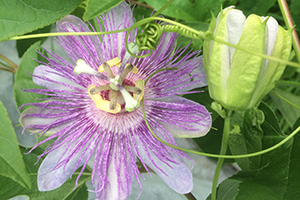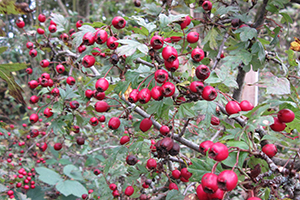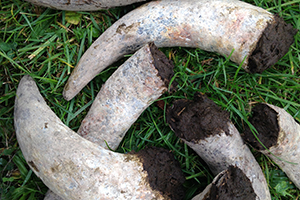Headlines
September in the garden
After August’s lull we’re back in full swing in the Weleda gardens, enjoying the warm soft light of these gentle September days (apart from when it rains!)

 The garden team harvested a fabulous crop of passionflower (Passiflora incarnata) this month, which we grow in one of our polytunnels. These exotic-looking climbing plants can survive outside, but having them under cover ensures that they all flower at the same time. And what flowers they are… quite stunning and full of Christian symbolism: the ten pale purple sepals and petals represent Christ’s ten faithful apostles, the three stigmas represent the three nails used in Christ’s crucifixion, the five anthers represent Christ’s five wounds and the frilly corona represents the crown of thorns. We collected 30kg of flowering herba (everything above the ground) and passion flower tincture (extract) is a key ingredient in our Avena sativa remedy (which aids restful sleep) due to it’s sedative effect.
The garden team harvested a fabulous crop of passionflower (Passiflora incarnata) this month, which we grow in one of our polytunnels. These exotic-looking climbing plants can survive outside, but having them under cover ensures that they all flower at the same time. And what flowers they are… quite stunning and full of Christian symbolism: the ten pale purple sepals and petals represent Christ’s ten faithful apostles, the three stigmas represent the three nails used in Christ’s crucifixion, the five anthers represent Christ’s five wounds and the frilly corona represents the crown of thorns. We collected 30kg of flowering herba (everything above the ground) and passion flower tincture (extract) is a key ingredient in our Avena sativa remedy (which aids restful sleep) due to it’s sedative effect.
Another traditional herbal plant that helps to promote sleep is hops (Humulus lupulus) and we’ve just collected and dried this year’s flower harvest.
One of my favourite September harvests is hawthorn (Crataegus oxycantha); yesterday we hand collected 10kg of the ripe red berries from the many trees and hedges in our garden. These were squashed, added to purified water and ethanol, and gently heated to body temperature for one hour. The mixture is now being left for 14 days in a sealed container, then it will be pressed, filtered and the resulting liquid is what we call the ‘mother tincture’ which is the starting point for many of our medicines and remedies.
 I’ve been gardening and harvesting for Weleda for over 20 years now and the hawthorn harvest is proving to be a real indicator of the changes taking place to our UK climate. The berries used to be ripe from mid-October and we always had freezing cold fingers when we harvested them. Now the berries are ripe from mid-September onwards and the harvesting weather is usually mild and often sunny.
I’ve been gardening and harvesting for Weleda for over 20 years now and the hawthorn harvest is proving to be a real indicator of the changes taking place to our UK climate. The berries used to be ripe from mid-October and we always had freezing cold fingers when we harvested them. Now the berries are ripe from mid-September onwards and the harvesting weather is usually mild and often sunny.
We build the last of our compost heaps this month, while there’s still warmth in the air and we always add the Biodynamic compost preparations when we build or turn each heap. These special preparations are made from common native plants (nettle, yarrow, dandelion, chamomile, oak and valerian) and they help to manage the compost heaps decomposition and transformation into rich fertile compost (compost making mirrors nature’s breaking down and building up processes).
We tend to think that in Autumn all of nature ‘dies back’ for a period of dormancy. Whilst that’s true of the plant life above the ground (we can now see the leaves turning colour and dropping to the earth and the perennial plants drying and withering), the soil itself actually starts to ‘wake up’ and regenerate itself from the end of September and into the autumn and winter months.
This then is the time of year when we make these biodynamic preparations and bury them in the living soil for the next six months, taking advantage of this extra life force under the ground, as they too go through their own process of transformation.
One of the key biodynamic preparations we make in early autumn is horn manure. Horn manure isn’t a fertiliser in the traditional sense of the word, but it adds a fertilising or growing force to the soil, benefiting the huge variety of living organisms that call the soil their home.

It’s made from fresh cow manure that is stuffed into a cow horn and then buried in the soil for the winter time. During these months, the manure transforms into a dark crumbly substance that contains populations of beneficial micro-organisms far higher than those occurring in normal compost or good soil.
When stirred into water, then sprayed out onto the land, this horn manure enhances and enlivens the life in the soil, which in turn supports healthy and resilient plants, grown without the need of artificial fertilisers and pesticides.
The times when the gardeners come together to stir the biodynamic preparations are for me some of the most precious of times in the Weleda gardens… we take a pause from our endless ‘jobs to do’ list and focus instead on being present and sending positive love and intention into the stirring task in hand.
